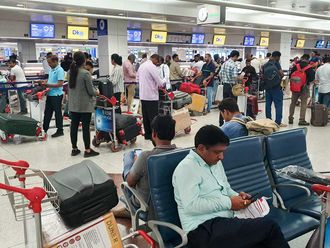
Berlin: European aircraft maker Airbus will finish the year neck-and-neck with arch-rival Boeing in terms of orders, Airbus’ commercial chief John Leahy said on Tuesday.
“I think we’ll end up this year even, maybe Airbus even slightly ahead,” Leahy told a news conference at the ILA Berlin Air Show.
Airbus has already booked 236 orders since the beginning of the year, Leahy said.
“The market is moving towards bigger and bigger aircraft,” he said.
Leahy also hinted at a possible slight slowdown in orders towards the middle of the year, but insisted that would be nothing to worry about.
Airbus and Boeing hold a virtual duopoly in the aeronautical sector and the orders of the two bitter rivals are closely watched.
Separately, Airbus’ chief operating officer Guenter Butschek said the current tensions between the West and Russia was not having any impact on the company’s supply of titanium.
Russia is a key supplier of titanium, which is an essential component in Airbus aircraft.
“At this point we don’t see any short-term impact,” Butschek said.
At the end of April, the number two of the Airbus Group, Marwan Lahoud, had expressed concern about the supply of titanium if trade tensions with Russia increase as a result of the crisis in Ukraine.
At Airbus, a working group had been set up to examine the potential risks for the value chain, but its findings so far were reassuring, Butschek said.
If the situation deteriorated, notably with the imposition of trade sanctions against Russia, Airbus would have to find other suppliers.
Overall, commercial chief Leahy said he was not particularly worried about the development of the market Russia.
According to a the group’s outlook for the period from 2013-2032, Airbus estimates the Commonwealth of Independent States or CIS (Russia and the former Soviet republics) will need 1,095 new aircraft, or 4.0 per cent of overall global demand, over the next 20 years.










